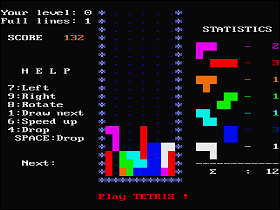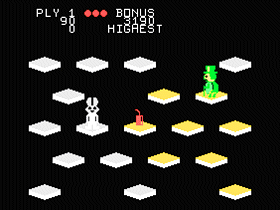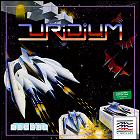Donkey Kong
 The Game: How high can you go? Help Jumpman (Mario) save Pauline from Donkey Kong’s clutches by climbing ladders and avoiding barrels. (Ocean Software, 1986)
The Game: How high can you go? Help Jumpman (Mario) save Pauline from Donkey Kong’s clutches by climbing ladders and avoiding barrels. (Ocean Software, 1986)
Memories: Three years after the release of AtariSoft’s Commodore 64 Donkey Kong port, European software developer Ocean Software decided it was time for another Donkey Kong remake and accepted the challenge.
It goes without saying that the more familiar programmers become with a particular platform, the more advanced their games will look and play. This is generally why games released later in a platform’s lifespan often seem more advanced than earlier titles. Such is the case with Ocean’s version of Donkey Kong. With an additional three years of familiarity with the Commodore behind them, Ocean was really able to crank one great looking port. [read more]

 The Game: Various shapes consisting of four blocks each fall from the top of the screen, giving the player a short time to rotate, move (left or right only), and ultimately drop each piece into place. The goal is to put complementary shapes together, forming a solid line (or several solid lines) and leaving no gaps. Completed horizontal lines disappear from the screen, and the remaining pieces drop to the bottom. Bonus points are awarded for using the tallest piece – four blocks tall – to eliminate four lines at once. Allowing the shapes to pile up until they reach the top of the screen ends the game. (freeware, 1986)
The Game: Various shapes consisting of four blocks each fall from the top of the screen, giving the player a short time to rotate, move (left or right only), and ultimately drop each piece into place. The goal is to put complementary shapes together, forming a solid line (or several solid lines) and leaving no gaps. Completed horizontal lines disappear from the screen, and the remaining pieces drop to the bottom. Bonus points are awarded for using the tallest piece – four blocks tall – to eliminate four lines at once. Allowing the shapes to pile up until they reach the top of the screen ends the game. (freeware, 1986) The Game: As Topper the top-hat-wearing turtle, your job is to jump from platform to platform until every platform on the screen is the same color, all without jumping into the empty space beyond the platforms. But as easy as this task may sound, it’s not that easy: rambunctious rabbits are ready to pounce on you, or at the very least keep you from reaching all of the platforms. Random explosives appear on some platforms and you have to avoid that platform until the danger has passed – and not even all of the platforms stay in one place. (Navarone Software, 1986)
The Game: As Topper the top-hat-wearing turtle, your job is to jump from platform to platform until every platform on the screen is the same color, all without jumping into the empty space beyond the platforms. But as easy as this task may sound, it’s not that easy: rambunctious rabbits are ready to pounce on you, or at the very least keep you from reaching all of the platforms. Random explosives appear on some platforms and you have to avoid that platform until the danger has passed – and not even all of the platforms stay in one place. (Navarone Software, 1986) The Game: Destroy massive motherships while fighting waves of enemies and avoiding obstacles at breakneck speeds in this groundbreaking horizontal SHMUP. There’ll be time to rest when you’re dead. (Hewson, 1986)
The Game: Destroy massive motherships while fighting waves of enemies and avoiding obstacles at breakneck speeds in this groundbreaking horizontal SHMUP. There’ll be time to rest when you’re dead. (Hewson, 1986) The Game: Your sleek spacecraft is launched from a base installation on Halley’s Comet (!). Your mission is to scout various bodies in the solar system – both planets and moons – which meet strictly defined criteria as dispensed by the computer. In some cases you must land, in others you must simply achieve orbit. You must learn to navigate the solar system using the constellations of the Zodiac, and learn to judge distance so you won’t overshoot your target (and therefore exceed your allotted mission time) with brief bursts of your faster-than- light drive. You climb in the ranks as you complete more missions. (Interscope, 1986)
The Game: Your sleek spacecraft is launched from a base installation on Halley’s Comet (!). Your mission is to scout various bodies in the solar system – both planets and moons – which meet strictly defined criteria as dispensed by the computer. In some cases you must land, in others you must simply achieve orbit. You must learn to navigate the solar system using the constellations of the Zodiac, and learn to judge distance so you won’t overshoot your target (and therefore exceed your allotted mission time) with brief bursts of your faster-than- light drive. You climb in the ranks as you complete more missions. (Interscope, 1986)